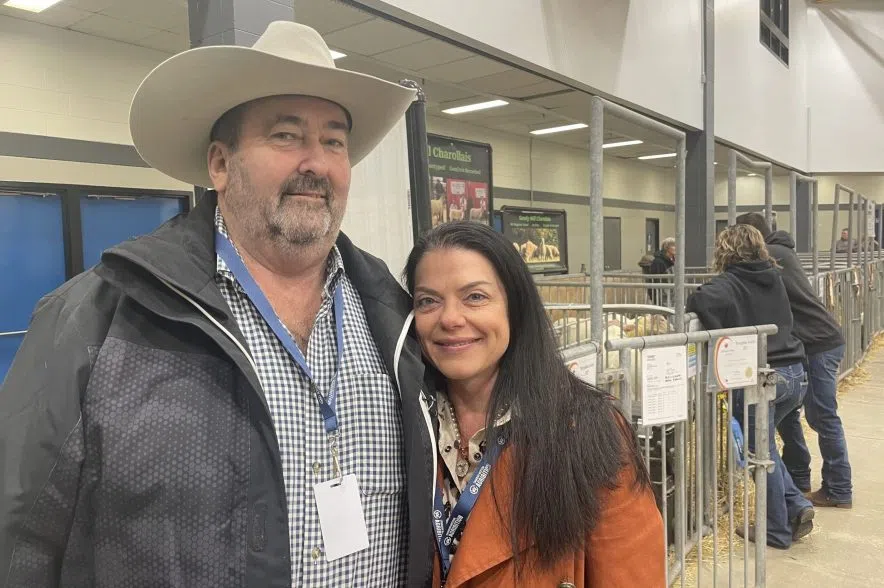Over Agribition’s 52-year run, one man has been flying up from down under for 38 years.
Greg Ebbeck is a Speckle Park cattle breeder west of Sydney in the highlands near Bundanoon, Australia. His company, Six Star Speckle Park, has sourced embryos from parts of Saskatchewan.
“We come back to see the best of the best in the cattle industry where we might be able to source more genetics,” Ebbeck said. “It gives us a window to where we might want to go to after Agribition to try and make contact with new clients.”
Ebbeck has visited Agribition with his wife, Svetlana Ebbeck. This is Ebbeck’s 110th time visiting Canada in his lifetime.
In 2005, Ebbeck switched to the Speckle Park breed from Herefords after taking a liking to them at Agribition. He rotates between 40 and 60 heads in his herd.
He said Saskatchewan’s cattle industry in general is held in high esteem with tough cattle ready for any conditions.
“They are very sound,” said Ebbeck. “They come from a background of hard conditions.
“We know that if you’ve got cattle here that have survived your climate extremes, they’ll probably survive at home too.”
Over the years, he has taken away new knowledge from the largest livestock show in Canada on new vaccination advice and feeding rations.
Out of his 38 years at the livestock show, he says this is the year with the best weather.
“This year is ridiculously warm,” said Ebbeck. “This is the warmest Agribition I’ve ever been to. No snow.”
Conditions mirror Saskatchewan down under
Ebbeck painted a picture similar to many Saskatchewan farmers with a dry year in Australia.
“We are back in drought, badly,” said Ebbeck. “Surface moisture is non-existent and a lot of dams are drying up.”
The raging wildfires between 2019 and 2020 were immediately followed with a few wet years. Because of so much wet weather, much of Ebbeck’s hay was damaged.
“The irony of it is that those wet years have stopped us from getting anything back into the shed to get us a supply of feed now in the drought,” he said. “It’s a bit of a Catch-22 at the moment.”
This year, farmers across the province struggled to find enough feed to support drought-stricken livestock. The provincial government committed $70 million to helping farmers offset costs.
Ebbeck said feed is high in demand with suffering crops along the southwestern part of Australia, and northern parts of Victoria.
He said that feed is extremely expensive and hard to get. Plus, the price of fuel to drive to feed sources has “gone through the roof.”
“Our fuel costs are killing us,” he said.
One farmer in Saskatchewan did get creative with new ways of finding an alternative feed source by collecting leftover jack-o-lanterns from this Halloween.
Ebbeck said he knew of another rancher who got creative and fed the cattle stale breads and cakes from a bakery back home.












